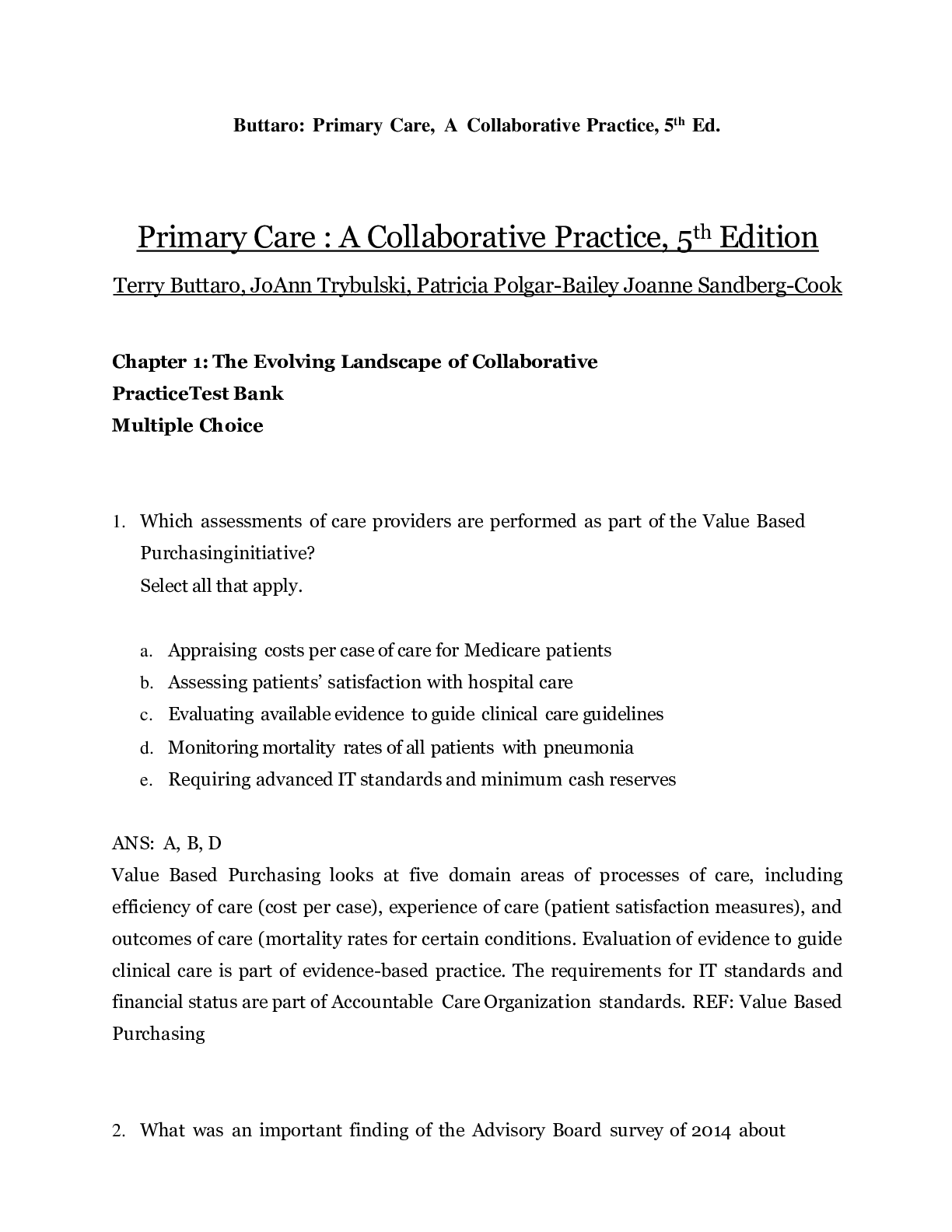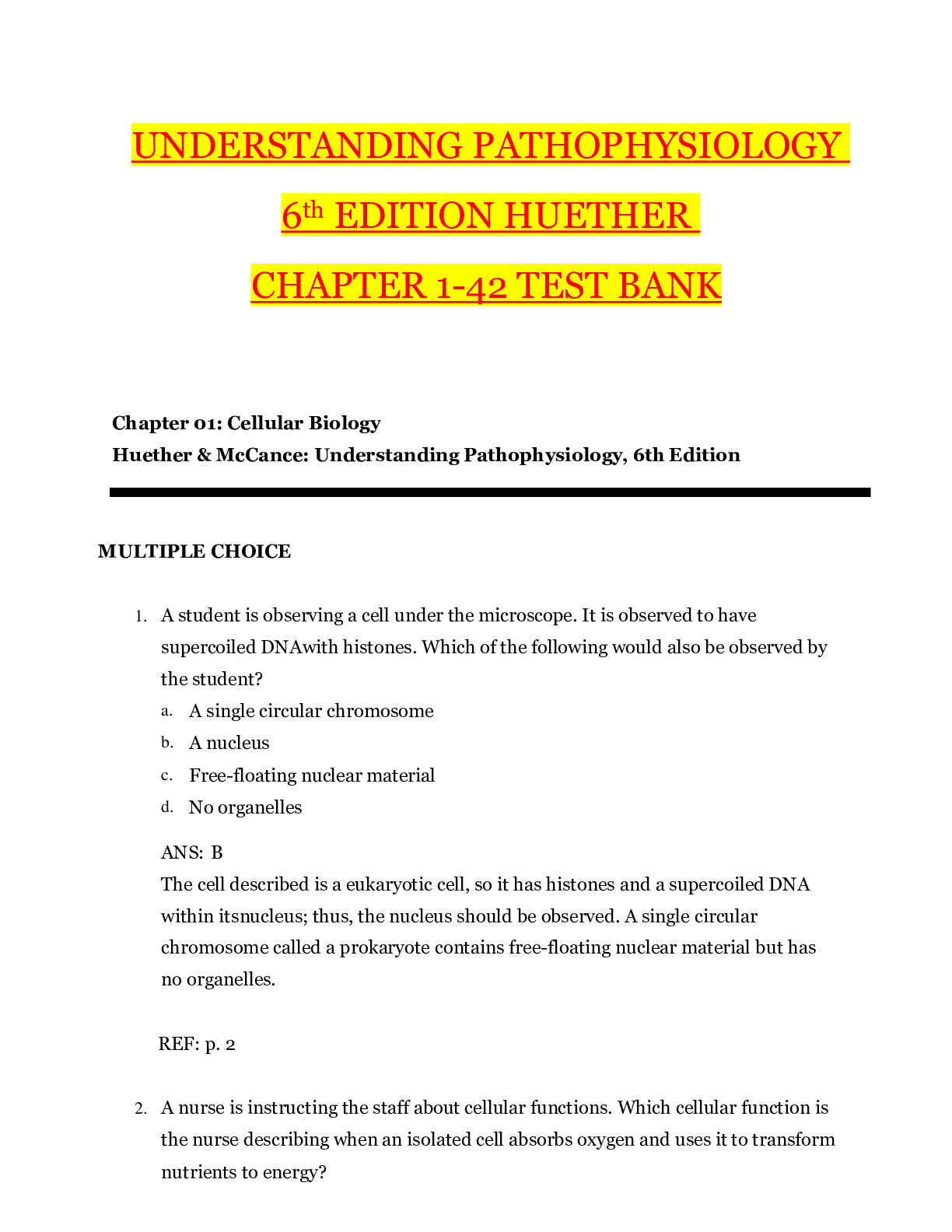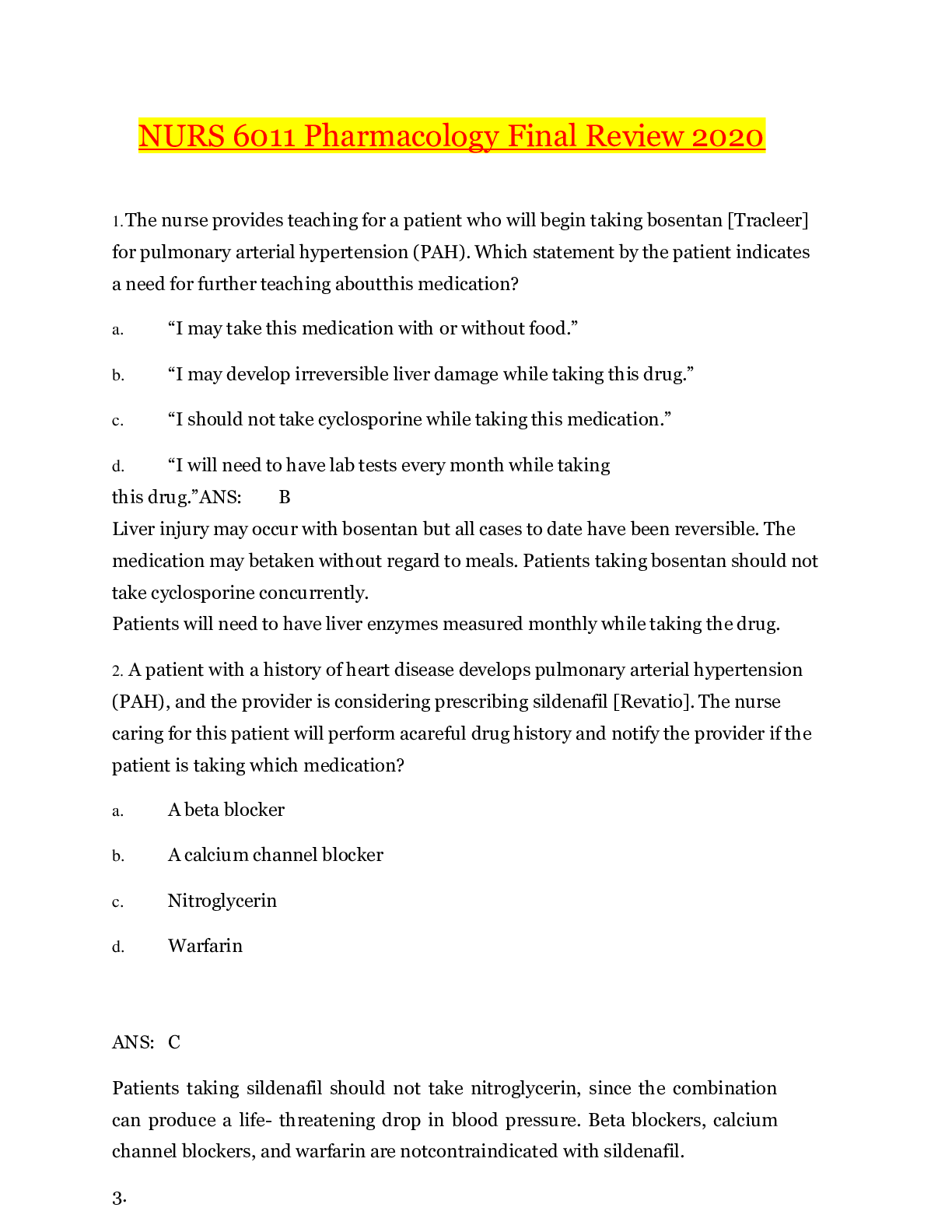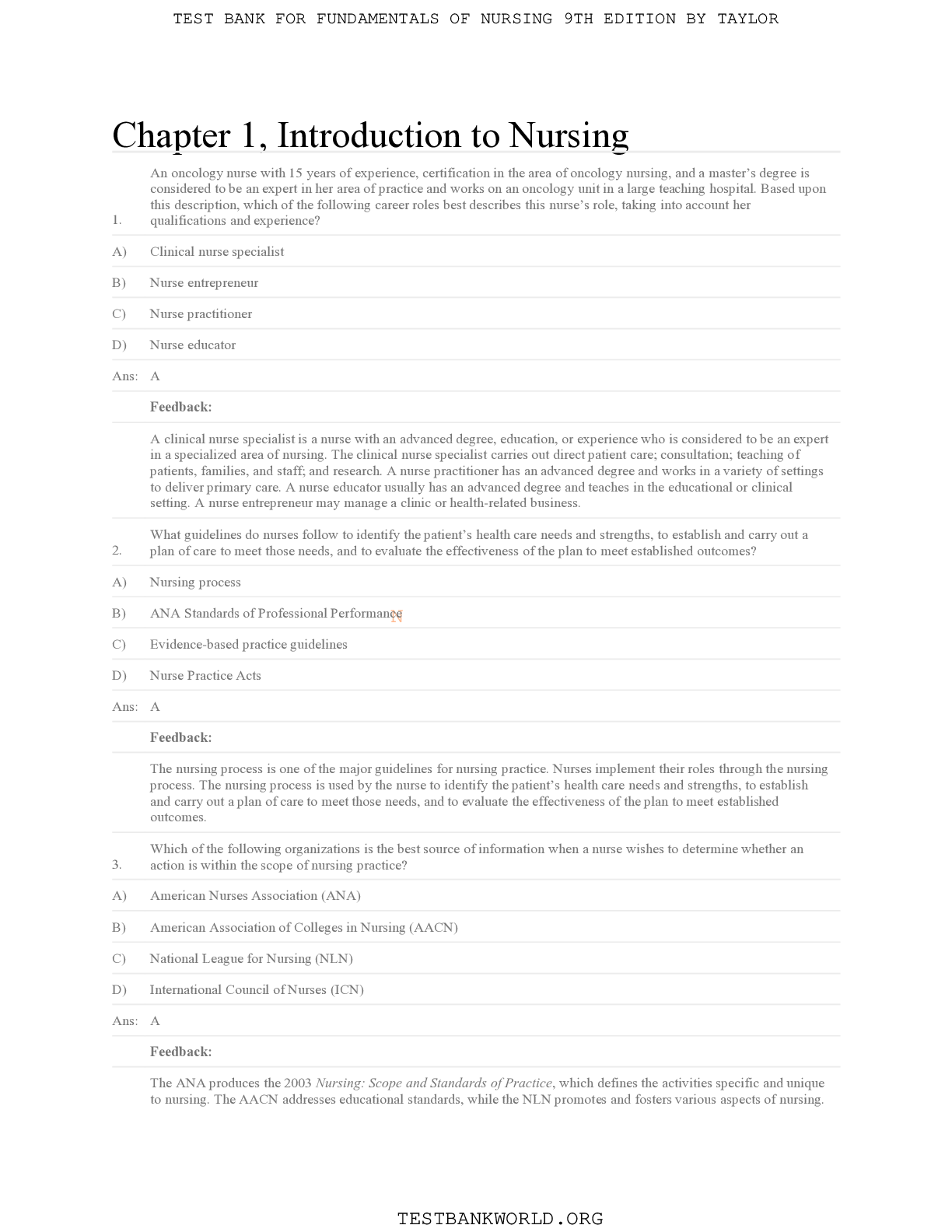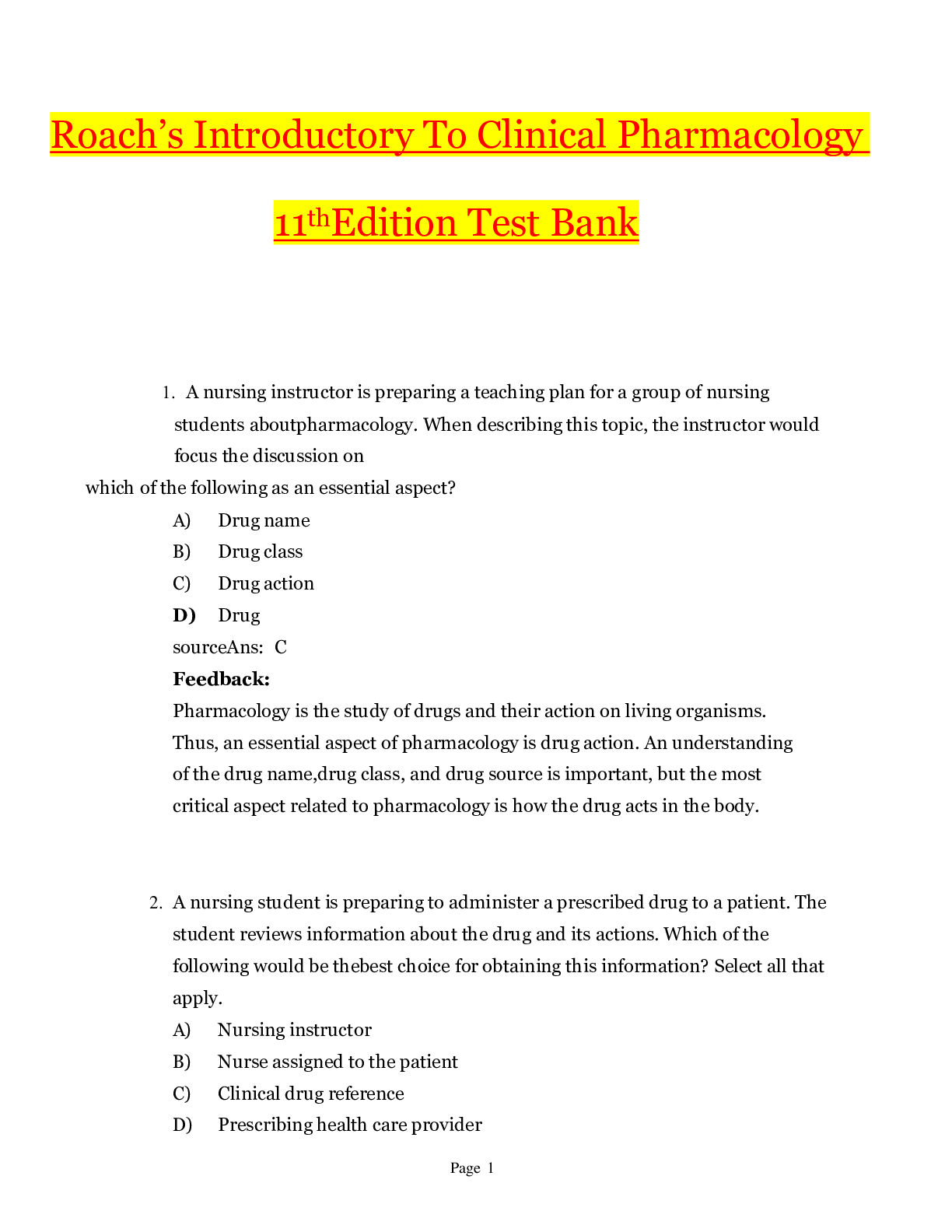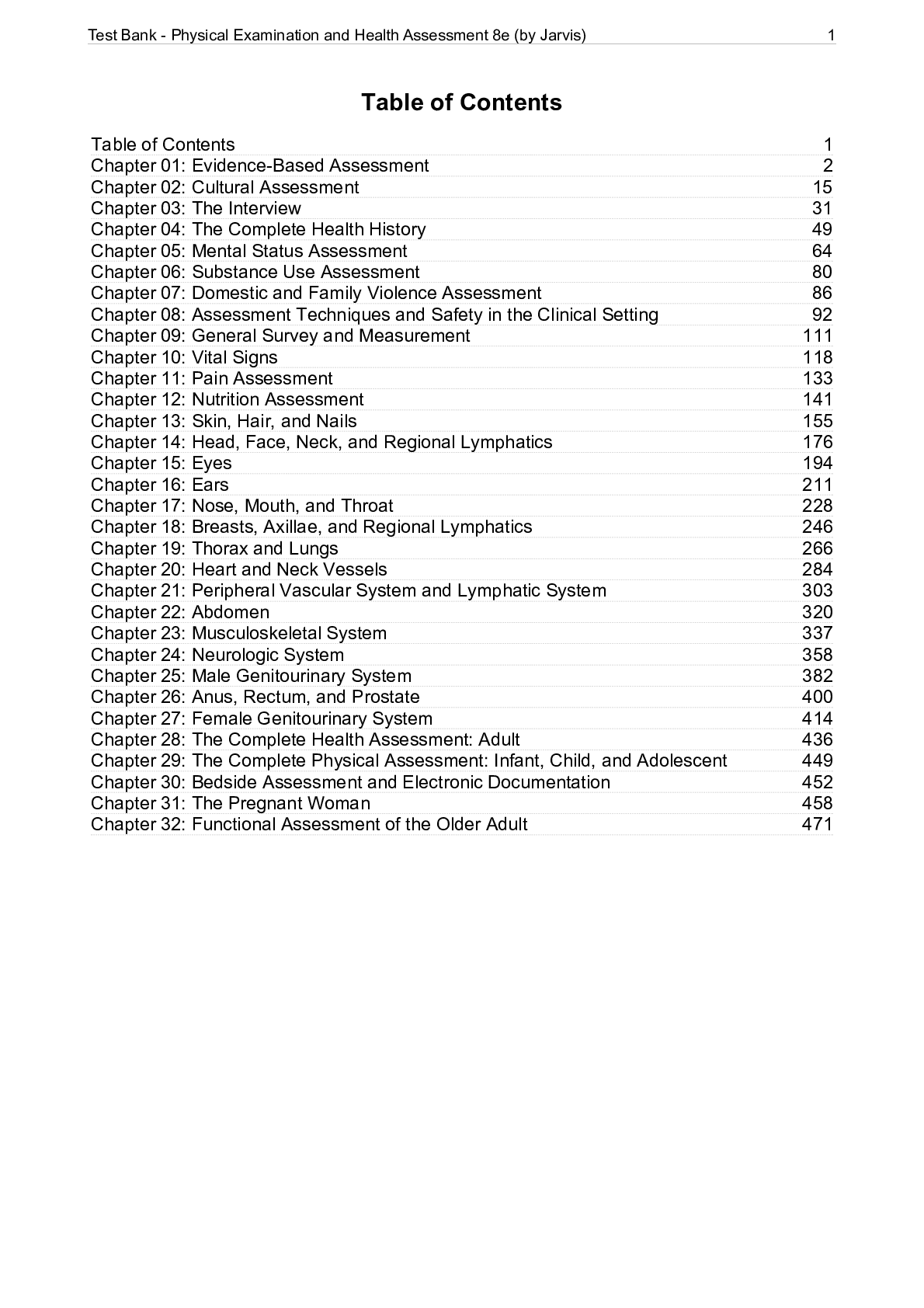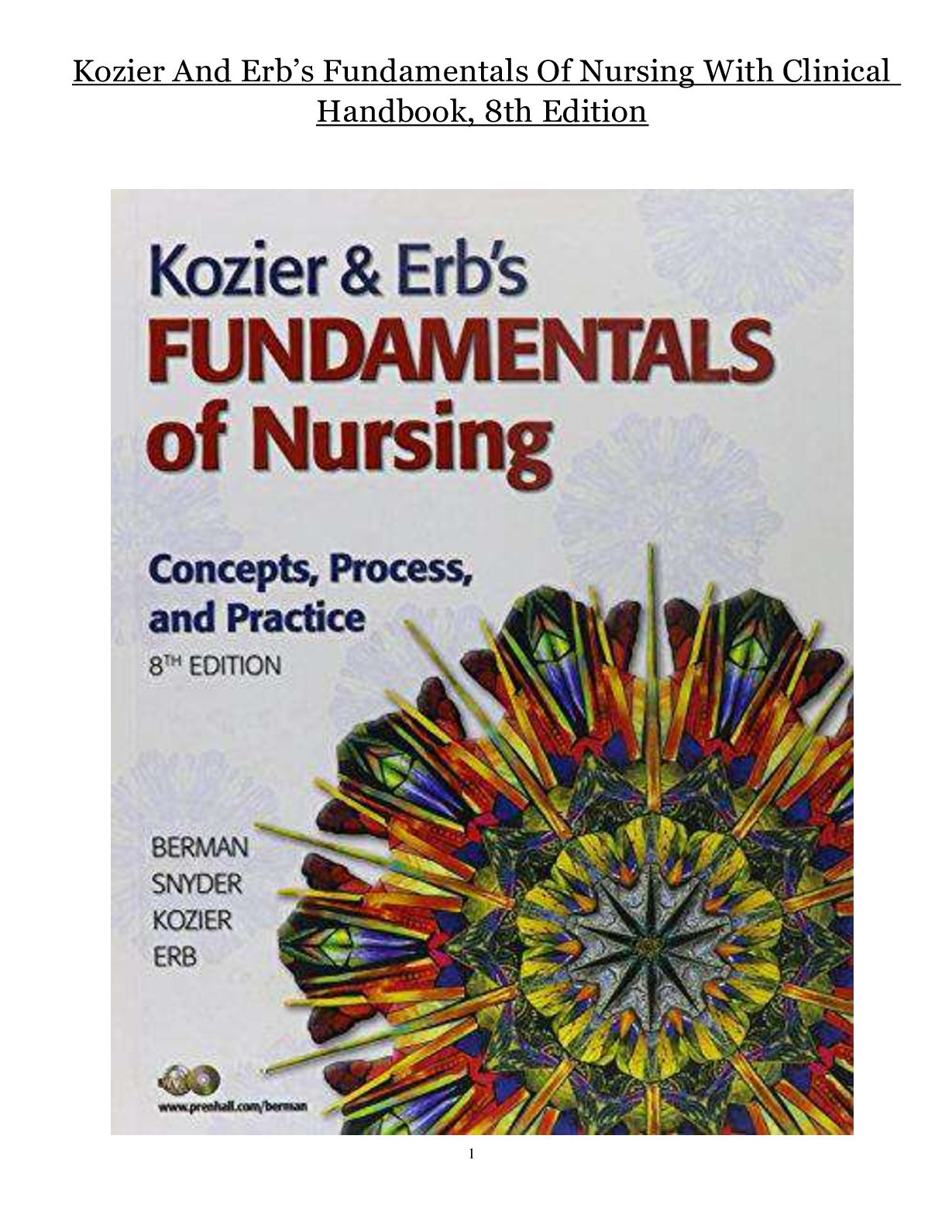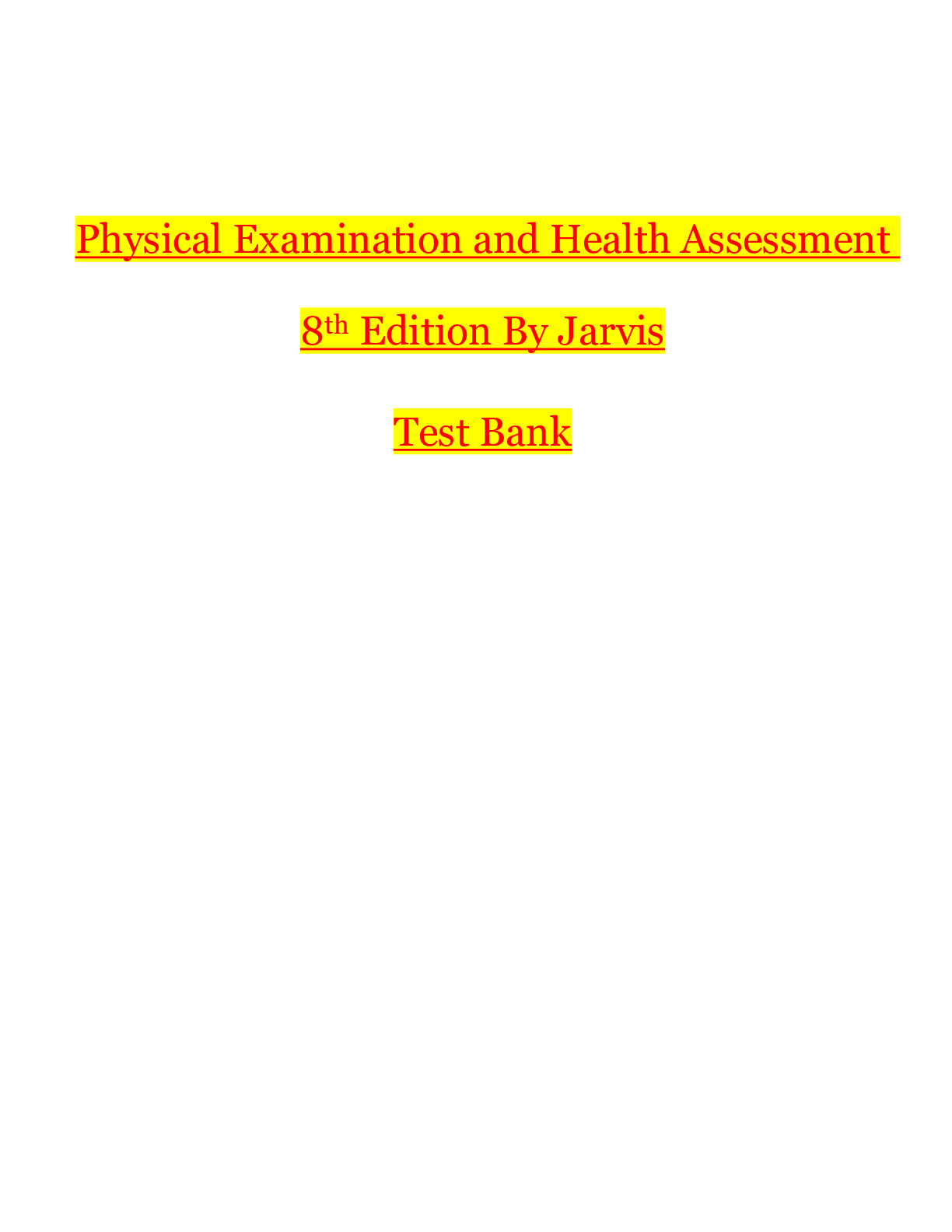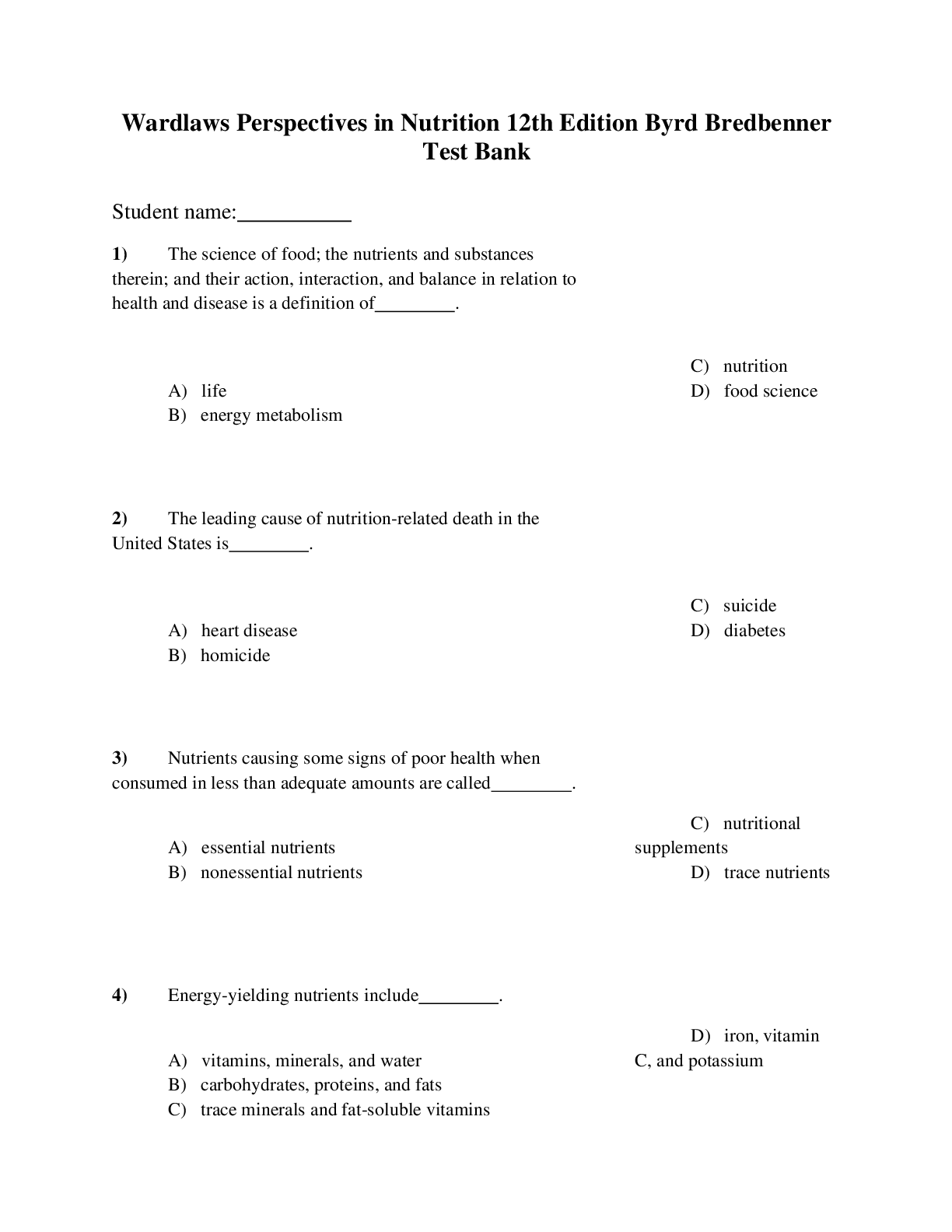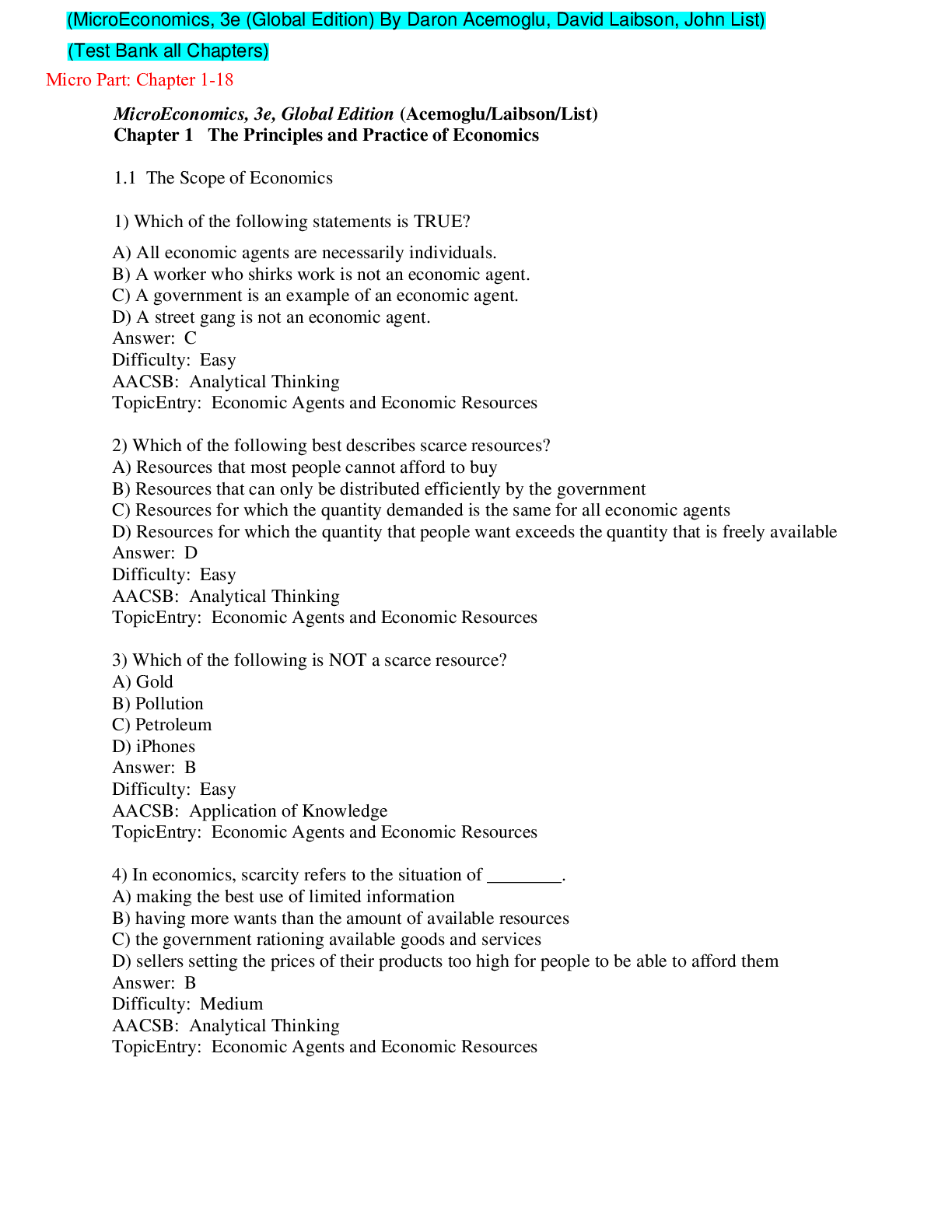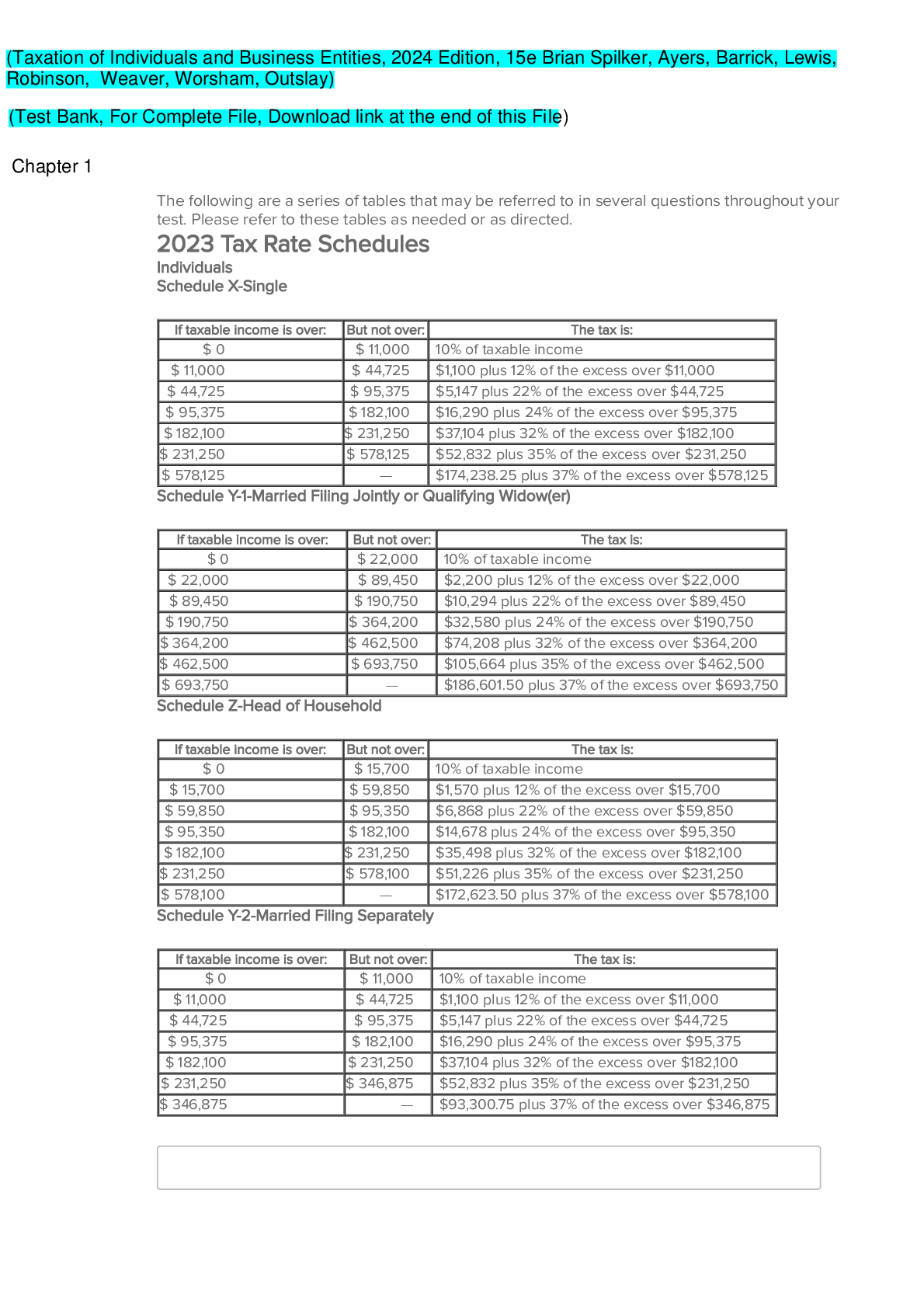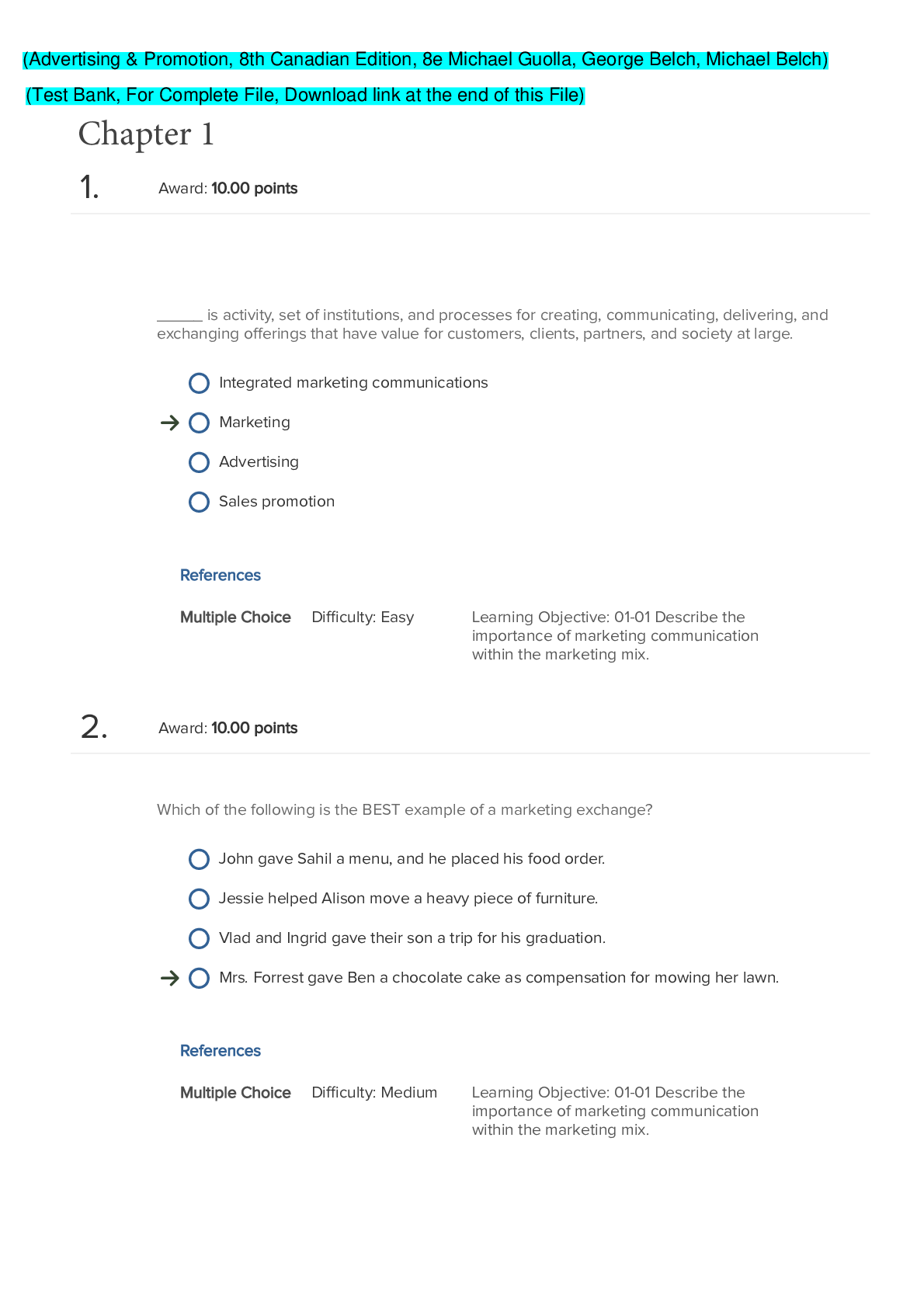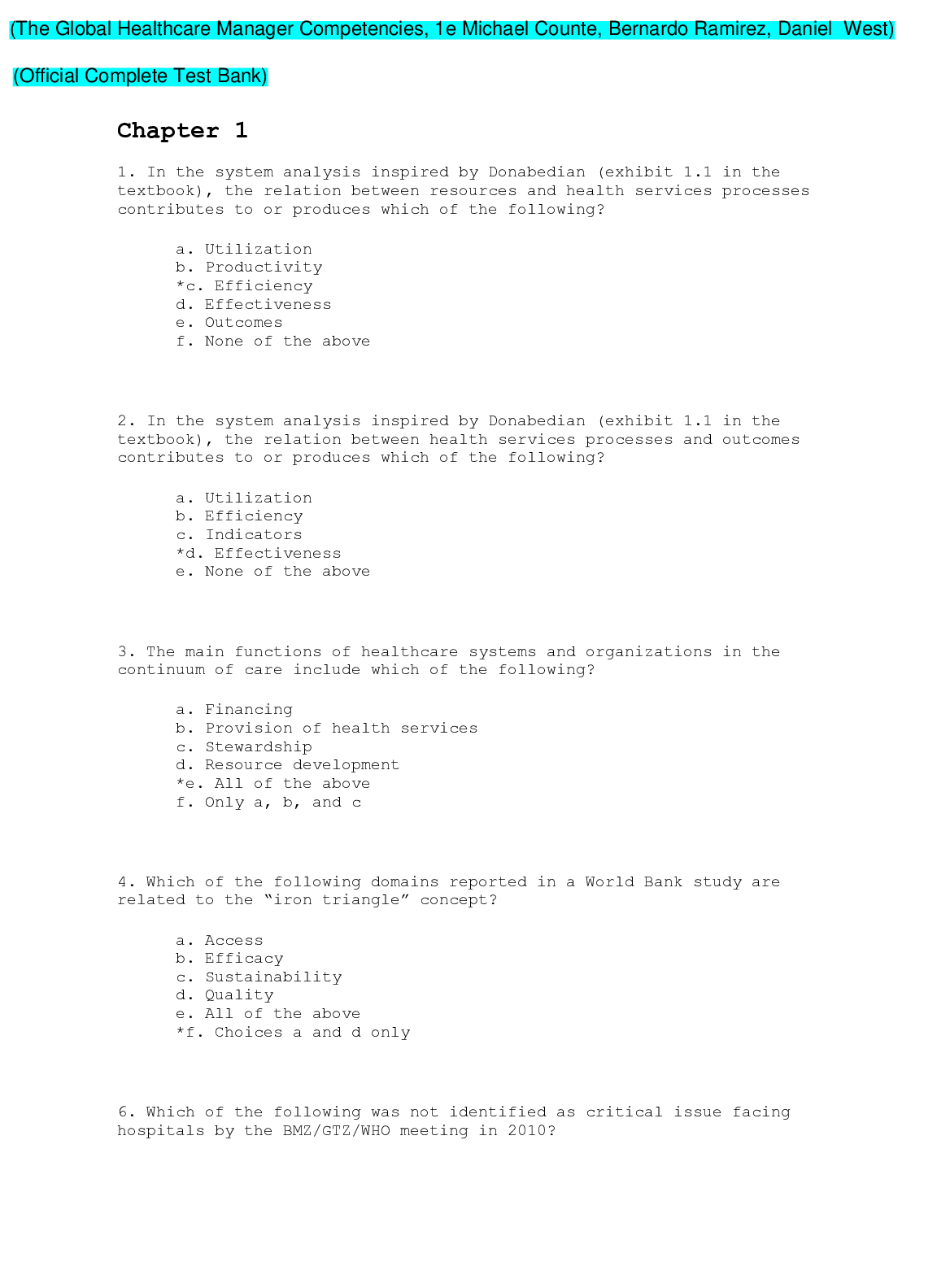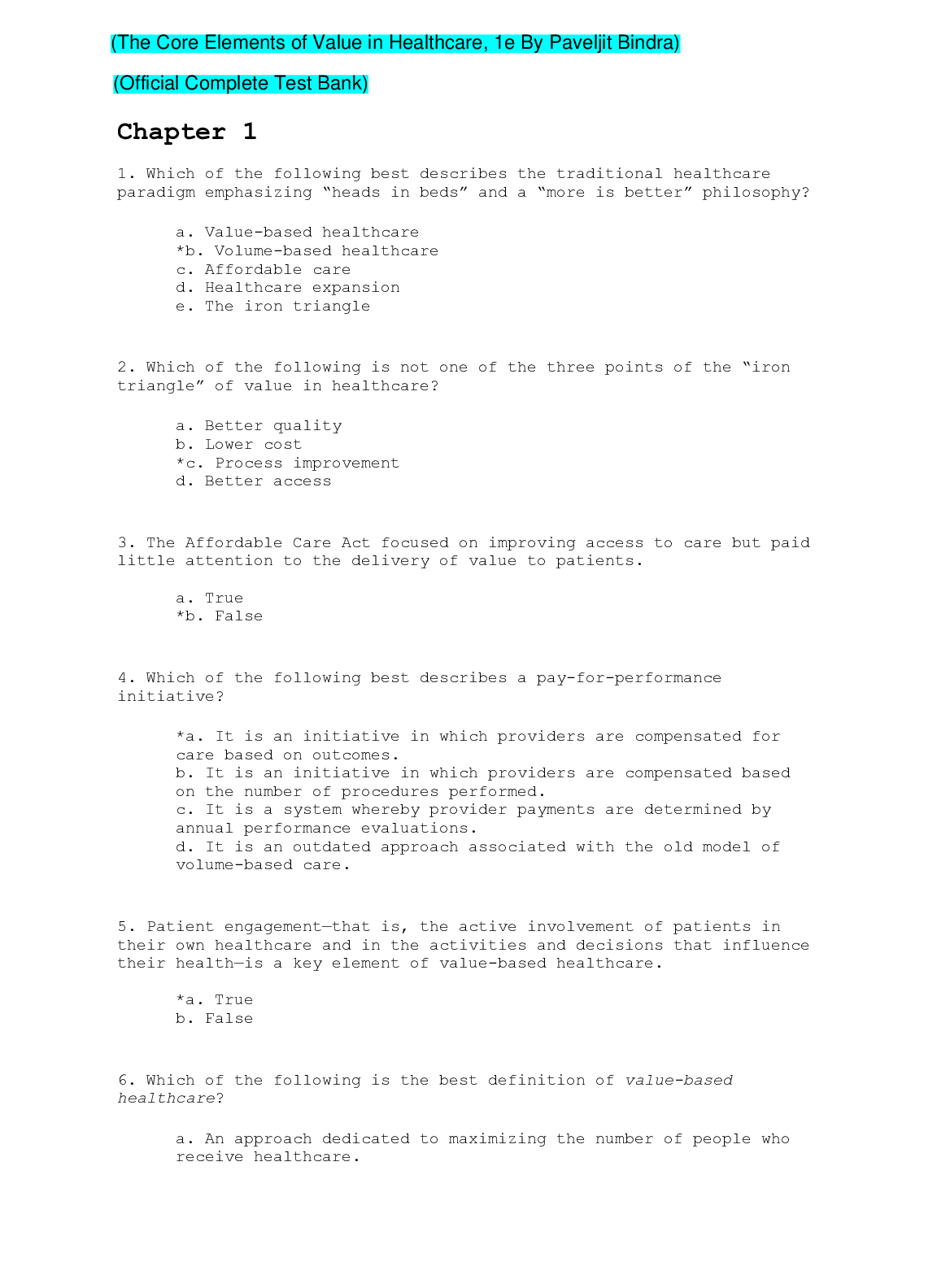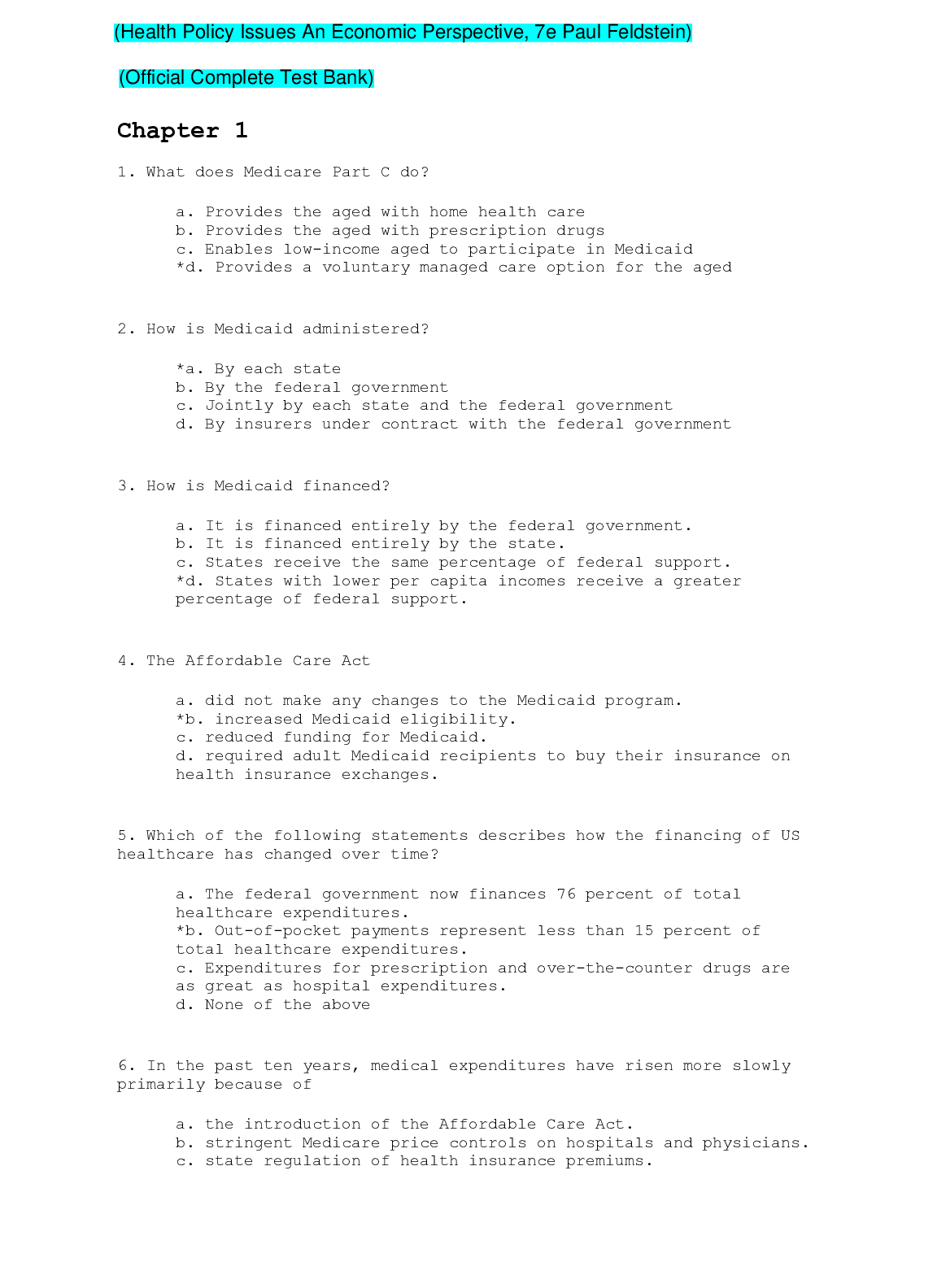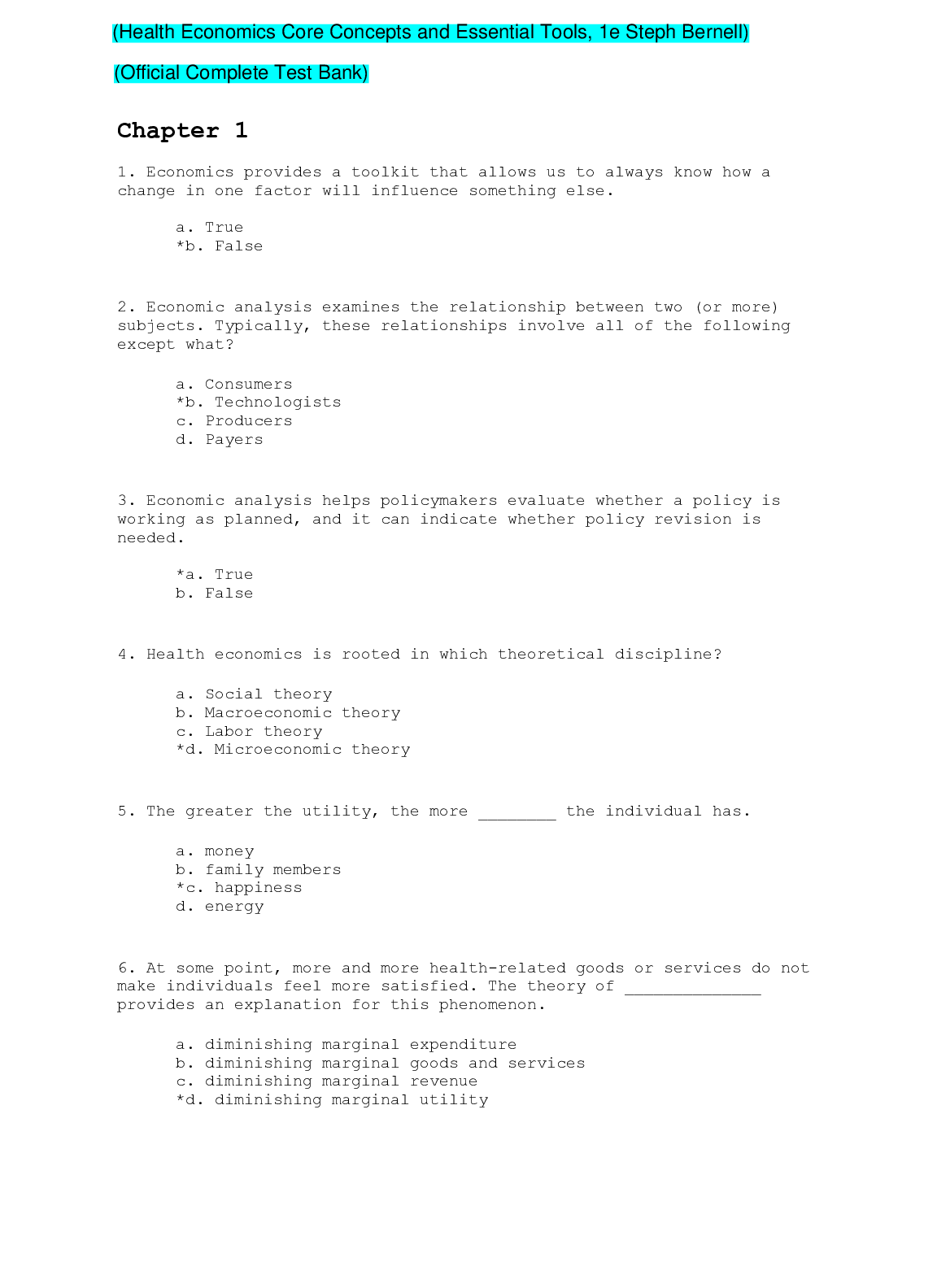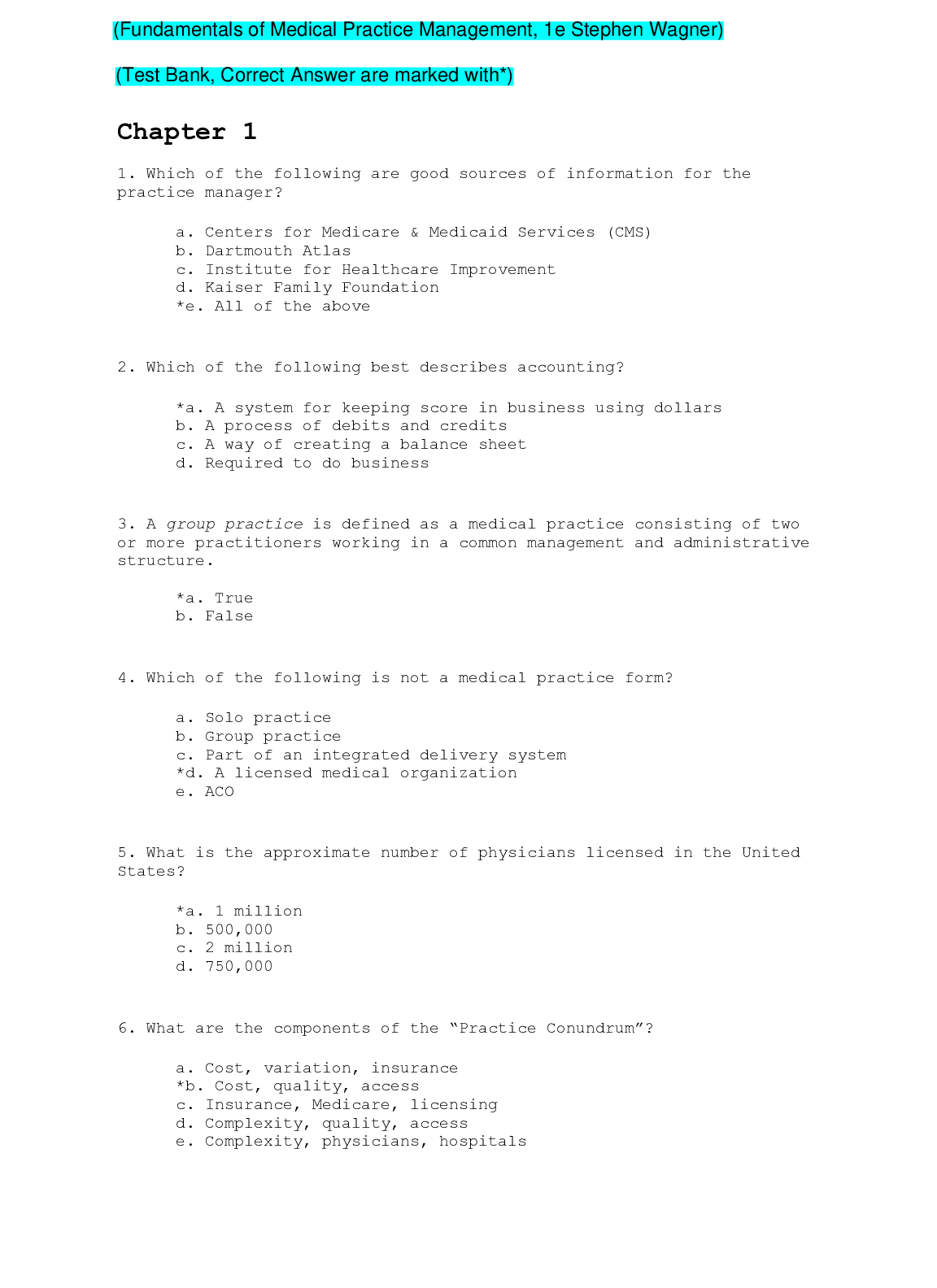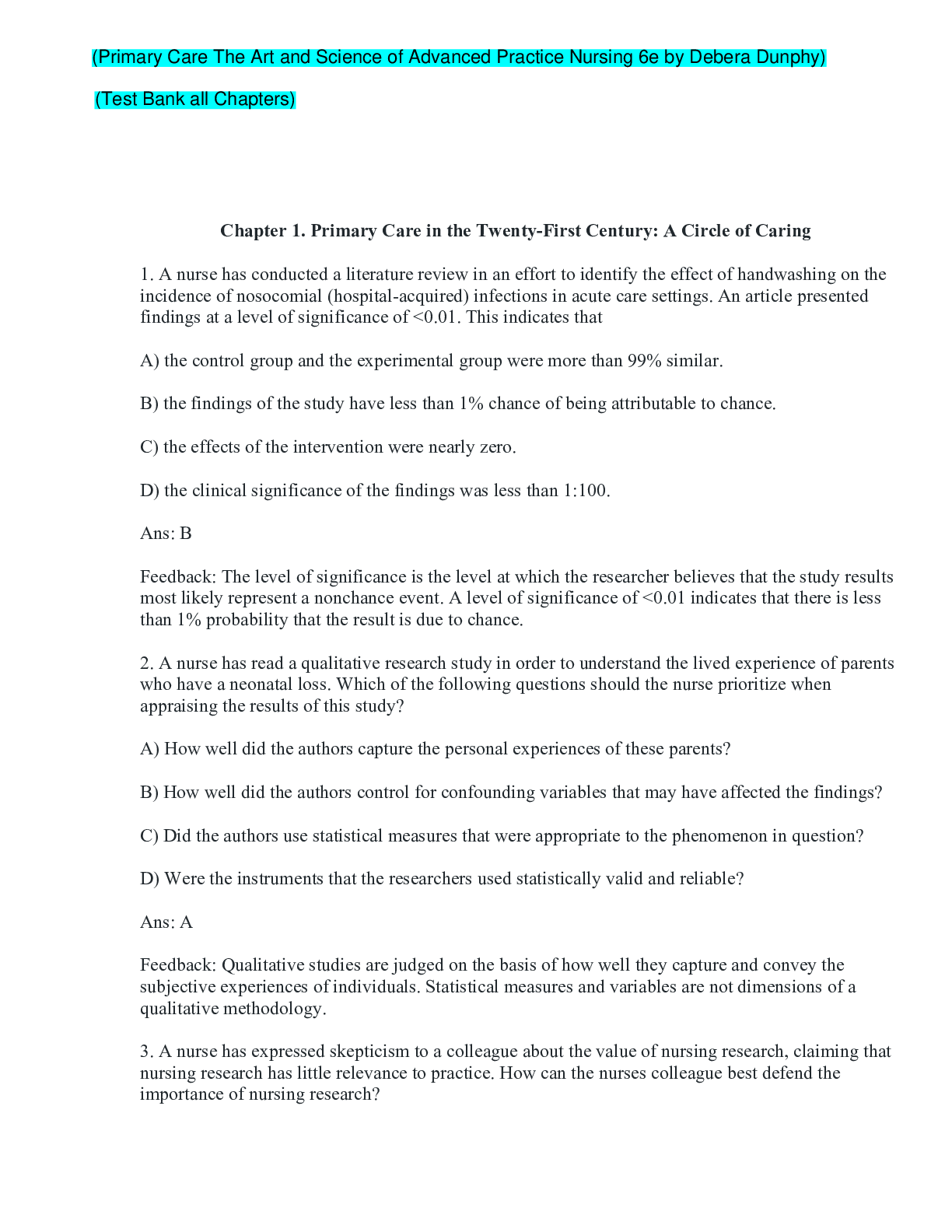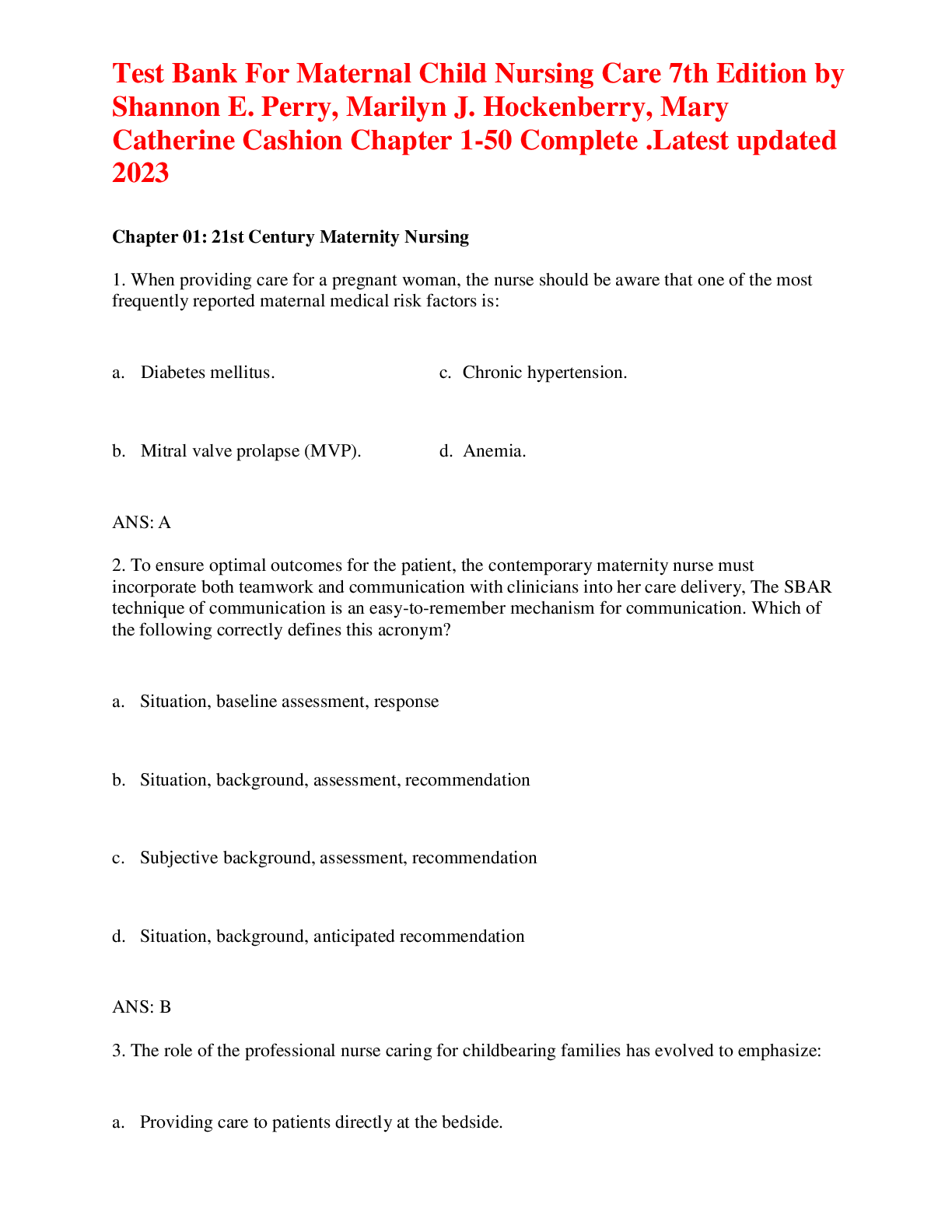Nutrition > TEST BANK > Test Bank for Wardlaws Perspectives in Nutrition A Functional Approach 1st Edition - Byrd-Bredbenner (All)
Test Bank for Wardlaws Perspectives in Nutrition A Functional Approach 1st Edition - Byrd-Bredbenner
Document Content and Description Below
Test Bank for Wardlaws Perspectives in Nutrition A Functional Approach 1st Edition - Byrd-Bredbenner Multiple Choice Questions 1. Which is true about the Dietary Reference Intakes (DRIs)? A. They... apply to people in Canada and the U.S. B. They differ by age group. C. They include Recommended Dietary Allowances and Tolerable Upper Intake Levels. D. They were created by the Food and Nutrition Board. E. All of these responses are true. Bloom's: 1. Remember Learning Outcome: 2.01 Explain the purpose of the Recommended Dietary Allowances (RDAs) and relate them to the other standards included in the Dietary Reference Intakes. Section: 2.01 Topic: Healthy Diet Guidelines 2. Dietary Reference Intakes (DRIs) values are for people who are ________. A. 1 to 4 years of age B. over 4 years of age C. over 19 years of age D. of all ages Bloom's: 1. Remember Learning Outcome: 2.01 Explain the purpose of the Recommended Dietary Allowances (RDAs) and relate them to the other standards included in the Dietary Reference Intakes. Section: 2.01 Topic: Healthy Diet GuidelinesChapter 02 - Tools of a Healthy Diet 2-2 © 2014 by McGraw-Hill Education. This is proprietary material solely for authorized instructor use. Not authorized for sale or distribution in any manner. This document may not be copied, scanned, duplicated, forwarded, distributed, or posted on a website, in whole or part 3. An Adequate Intake (AI) is set for a nutrient when ________. A. too little research is available to establish an RDA B. the needs during pregnancy decline instead of increase C. the need for a nutrient depends on total calories eaten D. the nutrient has a high potential for being toxic Bloom's: 1. Remember Learning Outcome: 2.01 Explain the purpose of the Recommended Dietary Allowances (RDAs) and relate them to the other standards included in the Dietary Reference Intakes. Section: 2.01 Topic: Healthy Diet Guidelines 4. Which Dietary Reference Intake (DRI) is set high enough to meet the needs of 97 to 98% of the population? A. Estimated Energy Requirements B. Estimated Average Requirements C. Recommended Dietary Allowances D. Dietary Reference Intakes Bloom's: 1. Remember Learning Outcome: 2.01 Explain the purpose of the Recommended Dietary Allowances (RDAs) and relate them to the other standards included in the Dietary Reference Intakes. Section: 2.01 Topic: Healthy Diet GuidelinesChapter 02 - Tools of a Healthy Diet 2-3 © 2014 by McGraw-Hill Education. This is proprietary material solely for authorized instructor use. Not authorized for sale or distribution in any manner. This document may not be copied, scanned, duplicated, forwarded, distributed, or posted on a website, in whole or part 5. Tolerable Upper Intake Levels (ULs) are ________. A. the maximum daily intake level not likely to cause harmful effects B. based on intakes from only supplements and highly fortified foods C. nutrient intake goals D. set for all nutrients Bloom's: 1. Remember Learning Outcome: 2.01 Explain the purpose of the Recommended Dietary Allowances (RDAs) and relate them to the other standards included in the Dietary Reference Intakes. Section: 2.01 Topic: Healthy Diet Guidelines 6. Which Dietary Reference Intake (DRI) reflects average daily needs? A. Adequate Intakes B. Estimated Average Requirements C. Recommended Dietary Allowances D. Tolerable Upper Intake Levels Bloom's: 2. Understand Learning Outcome: 2.01 Explain the purpose of the Recommended Dietary Allowances (RDAs) and relate them to the other standards included in the Dietary Reference Intakes. Section: 2.01 Topic: Healthy Diet GuidelinesChapter 02 - Tools of a Healthy Diet 2-4 © 2014 by McGraw-Hill Education. This is proprietary material solely for authorized instructor use. Not authorized for sale or distribution in any manner. This document may not be copied, scanned, duplicated, forwarded, distributed, or posted on a website, in whole or part 7. The AMDRs do NOT include estimates for intake of ________. A. essential fatty acids B. essential amino acids C. carbohydrate D. fat Bloom's: 1. Remember Learning Outcome: 2.01 Explain the purpose of the Recommended Dietary Allowances (RDAs) and relate them to the other standards included in the Dietary Reference Intakes. Section: 2.01 Topic: Healthy Diet Guidelines 8. The Recommended Dietary Allowances (RDAs) for nutrients are ________. A. the minimum amounts needed by an average 70-kg man B. twice as high as almost everyone needs C. average requirements for a population D. designed to meet the nutrient needs of 97 to 98% of individuals in a specific life stage Bloom's: 1. Remember Learning Outcome: 2.01 Explain the purpose of the Recommended Dietary Allowances (RDAs) and relate them to the other standards included in the Dietary Reference Intakes. Section: 2.01 Topic: Healthy Diet Guidelines [Show More]
Last updated: 11 months ago
Preview 1 out of 2 pages
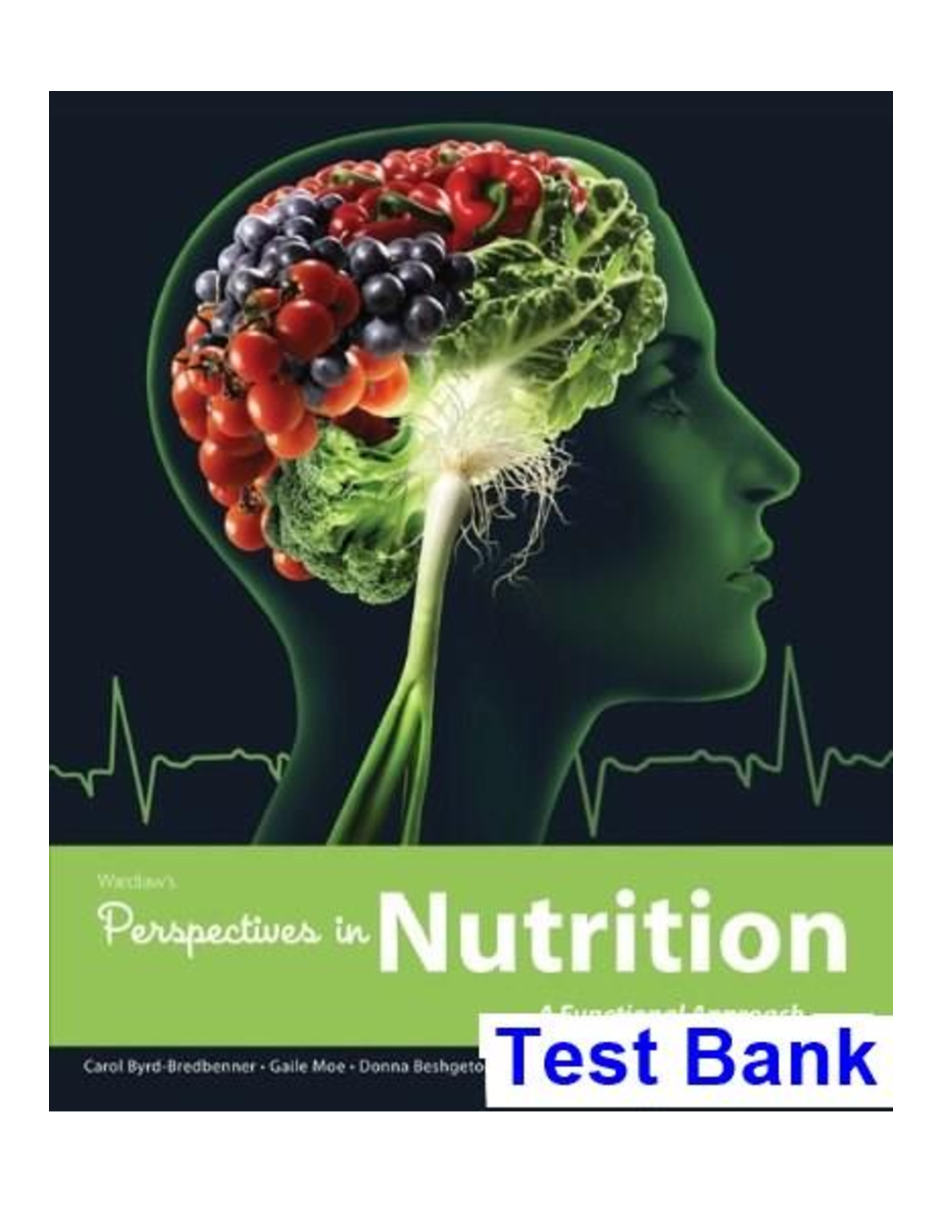
Reviews( 0 )
Document information
Connected school, study & course
About the document
Uploaded On
Mar 19, 2023
Number of pages
2
Written in
Additional information
This document has been written for:
Uploaded
Mar 19, 2023
Downloads
0
Views
92

